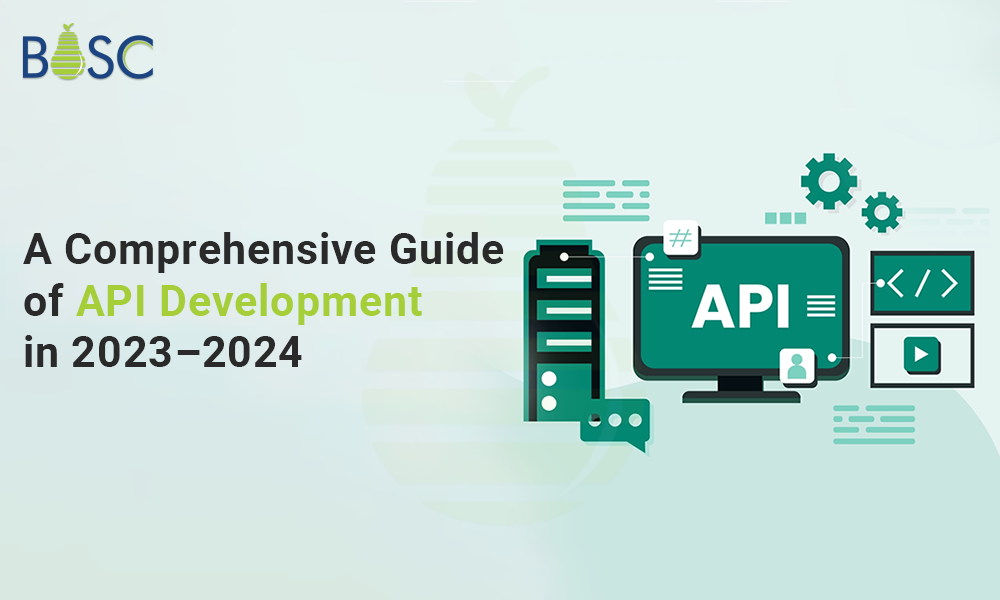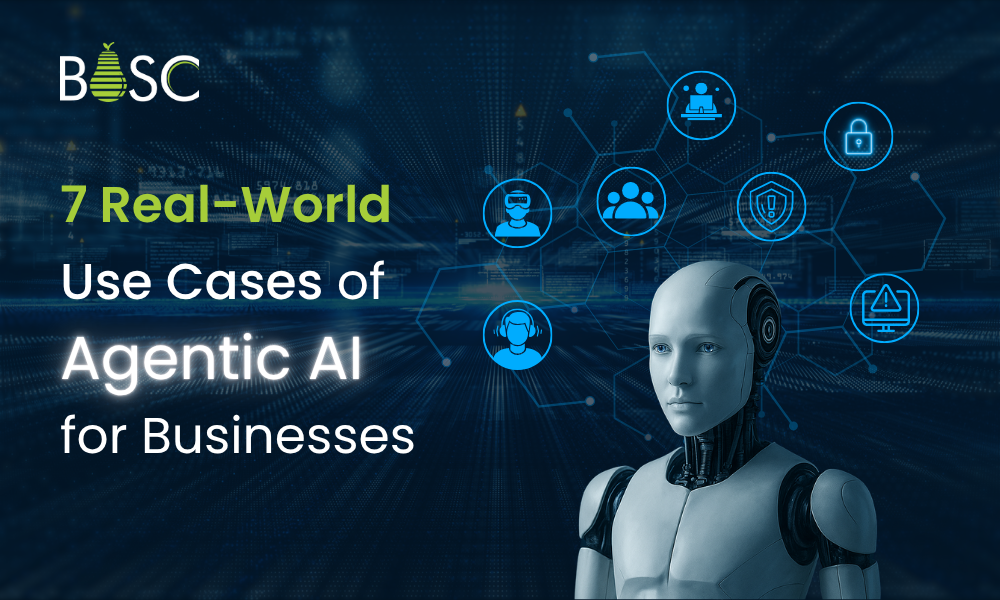The significance of Application Programming Interfaces (APIs) in software development cannot be emphasized. APIs have developed into crucial building blocks that provide programmers the freedom to create feature-rich, flexible, and scalable programs. This comprehensive guide aims to provide readers with a basic understanding of API development so that both beginner and experienced programmers can benefit greatly from APIs in their work.
This guide will cover the principles of API design in detail, along with the best practices and accessible tools. The concepts, categories, and protocols involved are some of the matters covered. We’ll begin by describing the role APIs represent in modern software development and how they make it possible for different program components to communicate with each other effortlessly. Then, we’ll look at the unique characteristics and ideal use cases of the various API formats, including RESTful, GraphQL, and SOAP.
The fundamentals of API design will then be discussed, with a special emphasis on the security, scalability, and maintainability of APIs. We will go over the implementation of common authentication and authorization techniques, rate limitation, and API versioning, among other important topics. Finally, we’ll discuss the most well-liked frameworks and tools for developing APIs and the value of testing and documentation. We’ll ensure you have the information and tools you need to establish secure, efficient, high-quality APIs. To gain a thorough overview of API development, grasp this blog.
Application Programming Interface (API): What does it mean?
The main query that will come up before starting is: What is an API? How will it operate? Following a set of rules, requirements, and standards known as an API (Application Programming Interface), an application or software can utilize features or services from other apps, gadgets, or platforms. This makes it possible for the program or app to offer better services.
The transfer of data between two software programs is made possible by this collection of computer programs. Also included are the conditions and terms of this data exchange.
Application Programming Interfaces Have Two Elements:
- With requirements finalized in the form of requests for processing and data delivery protocols, the technical document describes the data exchange possibilities across solutions.
- Interfaces for software that follow the specification that defines them.
The API of a piece of software is used when that software needs access to data or features. It outlines the circumstances in which the capability or data must be available. The data functionality that the first application requested is all that the other piece of software does. API also refers to the connection interface between these two programs.
Each API is implemented via function calls, language constructs that command the software to do particular services and tasks. Function calls are nothing more than verb and noun-filled sentences. A description of function calls is also provided in the API documentation.
There are many purposes for APIs. They frequently make custom software development easier or faster. Programmers use APIs to incorporate functionality from external sources into already-developed applications. They can also build new applications by relying on third parties.
How important is API?
Every app that works with data or enables communication between products or services is built on an API. It enables a mobile application or platform to share its data with others without needing mobile app developers, enhancing user experience. Additionally, APIs eliminate the need to build a comparable program or platform by allowing you to use the existing one or another app/platform in its place. These factors force the developers of apps and executives to concentrate on the API development process.
Which features define API development?
The following API features should be taken into consideration while developing a secure mobile application:
1. Identification and verification
The act of validating the right identity is referred to as authentication. On the other hand, authorization refers to determining whether the verified user has the authority to perform a specific action on a source. As an illustration, John (a confirmed user) can only acquire resources; he cannot create them.
OAuth, OAuth2, and JWT are the most widely used protocols for authentication and authorization.
A mobile application needs the most crucial API features are modification timestamps and search by criteria. An API should allow users to search data based on different criteria, such as a date. Following initial data synchronization, we immediately consider modifications (updates, edits, and deletions).
2. Paging
Sometimes we don’t need the complete file, only a quick glimpse at the latest data. In this case, the API should decide how frequently and how much data to present. The user should also know how many data pages are still accessible.
3. Caching
Cache By creating an approach for caching information, you can retrieve resources rapidly. The cost of your requests will decrease once the data has been prepared in an in-memory database. Programs like Redis and Memcached can be used to build a caching strategy.
4. Packages
Language-specific packages or containers are known as API wrappers. They combine numerous API request groups into simple techniques. The wrapper also makes several API calls without contacting the user.
5. Error management
Effective error handling makes it simple to identify whether a client error or a server malfunction caused the problem. While the customer can alter the request in some error-related situations, they must contact assistance in others. Here are a few effective methods for managing errors:
- Use error codes that follow established standards.
- Giving the right number of errors.
- Determines the main cause of the issue.
- Splitting it into domain-specific and general issues.
6. Testing
API testing and software testing are very similar. API testing involves testing the APIs and the integration testing portion of the process to see if they meet the performance, functionality, security, and reliability requirements. JMeter, Postman, and SoapUI are used most frequently for API testing.
How Does API Work?
- The API contains a sizable number of rules. API enables apps or software to communicate with other devices through those regulations. The application programming interface is placed between them to connect two programs or apps for a specific task.
- You can connect to Facebook via a mobile app. Through API, the mobile application will access data from the Facebook server. It is a simple procedure. The Application Programming Interface enables us to access the Facebook server’s credentials.
- Imagine you went to a website to book a train ticket. You completed the details. After accepting your details, the application will provide the train and ticket information on its page. From the original Government website, we got all of the data.
- The use of APIs is not just restricted to web APIs. For every system or software, numerous different APIs serve as an interface. The retrieving website or method receives a request from the application programming interface to get their database. A website or application of software can serve as an endpoint, and an API can connect them both.
- Application programming interfaces operate using SOAP and REST protocols. Application programming interfaces using SOAP are completely platform-dependent.
How many kinds of APIs?
According to the way they handle releases, APIs can be categorized.
1. Individual APIs
This application software’s interfaces are created to improve the company’s services and products. Developers inside and outside the organization can utilize these APIs to build new solutions.
In this instance, the app is open to the public, but only those connected to the API publisher can access its user interface. The company can control how the API is used by putting a private strategy in location.
2. API Partners
Partner APIs are used in software integration between two parties. In addition, they are freely advertised and given out to the business partners who have signed the publisher’s contract. A company can create new revenue streams by giving its partners advantages in terms of capabilities and access to data.
In the interim, they can also monitor how exposed digital assets have been used. They also examine the user experience of third-party applications that use their APIs. They also ensure that the corporate identity of their apps is maintained.
3. Public API
External or public APIs are other names for developer-oriented public APIs. These APIs are also accessible to other programmers. Through the public API program, you can sell your brand. Furthermore, if done correctly, it allows you to increase your income.
Open APIs and commercial APIs are the two subgroups of public APIs.
The Open API declares that all its features are available and have no usage restrictions. It also specifies that the documentation for the API and its description must be available. Additionally, it emphasizes that free application development and testing should be possible.
Customers have two payment options for commercial APIs: membership fees or pay-as-you-go. Publishers also provide free trials so customers can test out APIs before subscribing.
4. Integrated API
Composite APIs are widely used to integrate various service and data APIs. They are made by combining pre-existing API methods that allow users to perform several operations with just one call. This accelerates execution while enhancing listener performance in web interfaces.
Which terminologies are related to API?
API Key: When an API request utilizes a header or parameter to identify the requester, the allowed code included in the request is referred to as an API Key.
Endpoint: An endpoint is a communication channel between an API and another system.
JSON: JavaScript Object Notation, or JSON, is a format for API response bodies and request parameters.
GET: To obtain resources, the RESTful application program interface uses HTTP.
Post: The RESTful API creates resources using this HTTP method.
OAuth: This open standard authorization technique allows users to gain access without explicitly disclosing their credentials.
Latency: The time it takes for an API interface to process a request and deliver a response is called latency.
Rate-Limiting: API rate-limiting limits the speed at which an end user can access the APIs. In other words, it refers to simultaneously capping the quantity of API calls a user can make.
Throttling in API: API throttling is the process through which a consumer’s use of an API is limited for a certain period.
Tools to develop APIs
When it comes to API development, there are numerous tools accessible. The following list includes some of the most popular API tools and solutions used by developers to create APIs:
1. Apigee
Google’s Apigee is a management tool for API development. This solution is useful when a business is modernizing its older apps or simplifying the transfer of data across apps and services. In addition, it helps professionals when they create connected apps.
2. Dredd
An HTTP API testing framework is called Dredd.It is used to verify the backend description of an API. It verifies whether the API has been validated by carefully examining the description of the API.
3. APIMatic
For website APIs, there is a platform called APIMatic. Engineers use it to create SDKs for their APIs across ten platforms. Additionally, it’s utilized to keep it up-to-date with API upgrades.
This application allows app developers to convert API descriptions into other formats, such as IO Docs, API Blueprint, Postman Collections, HAR 1.4, WADL, Swagger, RAML, and OAI format.
4. Sandbox
Sandbox provides a quick and simple fake RESTful API. Sandbox is generated from API definitions. Additionally, it lowers the expense and risk of using a third-party API when testing.
5. Postman
App developers can evaluate the API’s performance using Postman, which tests and documents the API. Additionally, it is an interactive tool that may be automated.
6. SoapUI
An open-source testing tool is SoapUI. It is cross-platform compatible. It may also automate functional and non-functional tests, in addition. It is utilized for Web API regression, compliance, execution, security, and load testing.
7. Swagger
To build APIs, an open-source framework named Swagger is utilized. Well-known technological businesses like Getty Images, Apigee, PayPal, and Microsoft use Swagger.
8. JMeter
The open-source software is JMeter. It is used in performance testing of RESTful APIs.
Best Practices for API Development
APIs can help your business grow positively. It develops websites, mobile applications, operating systems, and software. On its server, it has a library of books on API development. There is also a PDF for API Development.
1. Utilize the HTTP Methodology
Before implementing the HTTP methodology, you must develop a strategy. You must be familiar with the various HTTP method types for that. POST can be utilized to create resources. Additionally, you can update data on already-existing resources. And GET is used to get information.
2. Leverage formal systems
CRUD-based systems are used via REST Application Programming Interface. For creating, reading, and updating, there is CRUD. The Hypertext Transfer Protocol (HTTP) is used for this method. This method enables web development companies, iPhone & Android application development companies, etc., to interact with external systems’ data as if it were an element of their own.
3. Can Stay Current With API Changes
The most recent alterations to your application programming interface can be tracked. You will be notified every time the Application Programming Interface is updated or added to. Every single API detail is documented. So that using it won’t make your users feel dated.
4. Maintain versioning
Make sure you are familiar with all the information in the new versions. To verify that impending modifications won’t impact them, users should be able to check earlier versions of your APIs. Make sure that the HTTP header is present on all new APIs.
Conclusion
It is safe to conclude that APIs now have more significance than previously in terms of software development and business collaboration. The essential technology connection APIs provide has been demonstrated to boost business earnings.
If you require the best API development services, contact our experts at a reputable mobile app development company in the USA. They will guide you through the entire process of developing a secure API.
Frequently Asked Questions (FAQs)
1. What Is the Lifecycle of an API?
The API lifecycle has three main phases: create, control, and consume. You develop and document your API during the creation phase. You put security policies in place during the control phase. Additionally, you publish and monetize APIs throughout the consumption phase.
2. What is backend development for APIs?
An API for backend services, such as servers, enables communication between programmers and backend services.Many options are accessible when selecting a backend API. It would be best to keep a few things in mind to achieve your objectives.
3. What are SOAP API and REST API development?
The REST (Representational State Transfer) API is an architectural style for software that specifies all the restrictions that must be followed when creating Web services. The SOAP (Simple Object Access Protocol) protocol is far more complex than REST since it incorporates several standards, including security.
Book your appointment now




